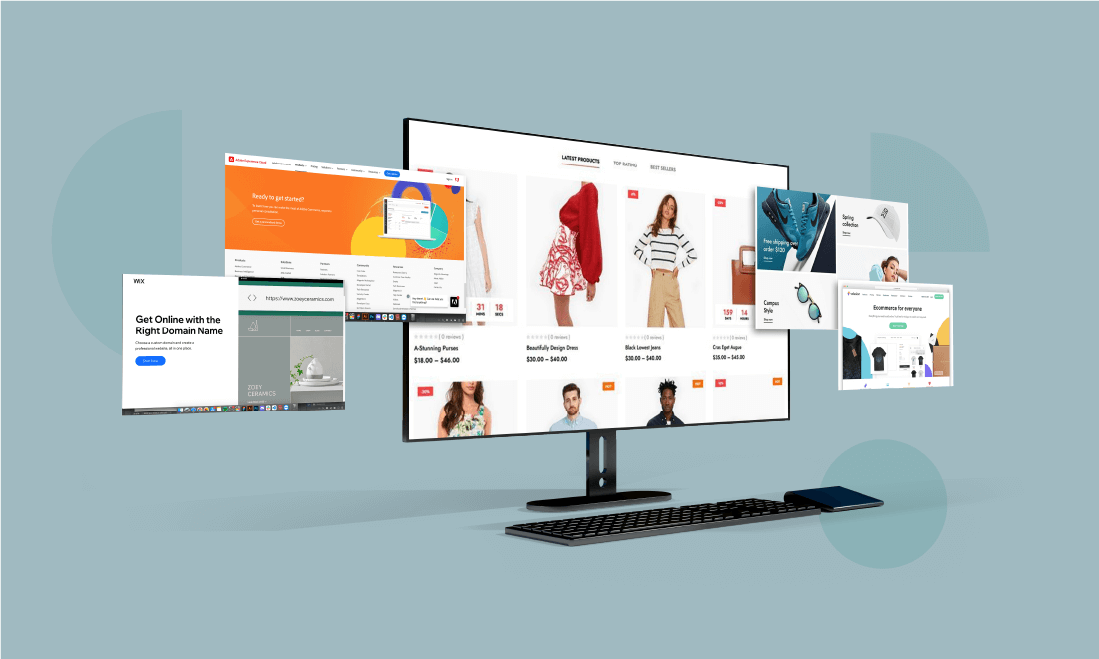CSP Insights
Your go-to source for the latest in news and information.
Designing for Dollars: Crafting E-Commerce Experiences That Sell
Unlock the secrets to e-commerce success! Discover design tips that boost sales and elevate your online store experience today!
5 Key Principles for Designing E-Commerce Websites that Convert
Designing an e-commerce website that converts visitors into customers requires a solid grasp of key principles. First and foremost, the user experience (UX) should be a top priority. A streamlined and intuitive navigation system enables users to find what they’re looking for quickly. Effective site architecture consists of clearly categorized products and an easy-to-use search function, ensuring visitors can explore the offerings without frustration. Additionally, incorporating a responsive design that works seamlessly on both desktop and mobile devices is crucial, as a significant portion of e-commerce traffic comes from mobile users.
Another critical principle is the inclusion of high-quality product images and engaging descriptions. Customers want to visualize what they’re purchasing, so investing in professional photography can significantly enhance their shopping experience. Additionally, trust signals such as customer reviews, secure payment options, and visible contact information contribute to building credibility. Finally, strategically placed calls to action (CTAs) encourage users to complete their purchases. Clearly defined and visually appealing CTAs help guide the user journey from product selection to checkout, ultimately maximizing conversion rates.

How to Optimize User Experience for Increased Sales in E-Commerce
Optimizing user experience (UX) is pivotal for boosting sales in e-commerce. A seamless UX ensures that potential customers can navigate your site effortlessly, find products quickly, and complete purchases with minimal friction. Start by streamlining your website layout with clear categories and an intuitive navigation menu. A well-organized site helps visitors locate desired items faster, enhancing their overall shopping experience. Additionally, consider implementing responsive design to ensure your site performs well on both desktop and mobile devices, as an increasing number of customers shop using their smartphones.
Another critical aspect of optimizing UX is enhancing page load speed. Faster loading times have been linked to higher conversion rates, as customers are less likely to abandon their carts due to frustrating delays. Utilize tools to assess and improve your site’s speed, such as compressing images and minimizing HTTP requests. Furthermore, consider integrating customer reviews and testimonials prominently on product pages, as they build trust and encourage purchasing decisions. By focusing on these elements, you create a positive shopping experience that can significantly increase your sales.
What Elements Make an E-Commerce Site Irresistible to Shoppers?
To create an irresistible e-commerce site that captivates shoppers, it is essential to focus on user experience and aesthetic appeal. A well-designed layout should incorporate intuitive navigation, allowing customers to easily browse through product categories. High-quality images and engaging product descriptions are pivotal in drawing attention and encouraging purchases. Furthermore, implementing responsive design ensures that the site is accessible and functional across all devices, enhancing user satisfaction and potentially boosting conversion rates.
Another crucial element of an enticing e-commerce site is trustworthiness. Incorporating customer reviews, ratings, and testimonials can significantly influence the buying decision, as shoppers often seek social proof before making a purchase. Additionally, clear and transparent policies regarding shipping, returns, and customer support foster confidence and alleviate potential concerns. Implementing secure payment gateways and visible trust badges also fortifies the credibility of the site, ultimately making it more appealing to potential customers.